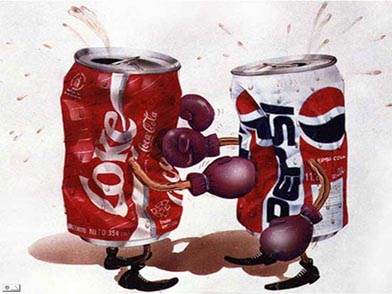 |
| Pepsi or Coke isn't the only choice you'll have to make this Super Bowl Sunday |
Today is Super Bowl Sunday, apparently, and while millions scramble around cleaning and cooking I am sitting quietly at work. Had the Packers won a few weeks back, I would be frantically searching for a website to listen to the game and a computer with speakers, but they didn't and I'm thankful today that I don't have to find myself cheering for one of these teams (whew!)
But outside my little bubble people are hitting the grocery stores, doing some last minute shopping for snacks, soda, and libations. It is definitely a great day to indulge in salty food and a comfy couch. As shoppers fill the grocery aisles they are making decisions on every purchase: diet or regular; tortilla chips or sour cream and onion; Miller or microbrew; bottles or cans? And one thing I'm sure hardly factors into anyone's purchase is the item's packaging.
 |
| How much trash does one party produce? |
It's a scenario that could be straight from our Free Science Classes, which coincidentally began this week. You're feeding 30 people. Do you choose paper plates that might not support the baked beans and mini chili dogs, plastic plates which will ultimately cost more, or are you going to put out your own ceramic plates and wash them all? Should you buy a 12-pack of soda cans or a couple 2-litre bottles and some cups? Just how recyclable is that plastic bottle?
| Plastics do not biodegrade clogging our oceans when they escape our trash, and mimic food sources of many marine animals. |
The conclusion we generally guide our students to is this: plastic can be a great thing - it makes things such as airbags, pacemakers, and even our fish tanks possible - but we can have too much of a good thing. One of the biggest problems future generations will face is plastics in the ocean as plastic bags, rings, and fragments choke marine life, smother coral reefs, and fill the stomachs of marine birds. Much of the plastic in use currently is actually not recyclable, and that plastic often ends up in the trash. That trash will never degrade using present technology; all plastic ever produced on this planet is still in existence.
One thing we can all do is reduce the demand for plastic at its source. Use fabric shopping bags, carry your own coffee mug, and opt for metal or paper packaging as much as possible. The energy saved by recycling *one* aluminum can can power a television for three hours. Filling a reusable mug each day saves 365 cups, sleeves, and lids - which stacked on top of one another would reach roughly 16 stories high.
 |
| I love my rockin' pink camo coffee mug, but it's plastic -- do I drink enough coffee to justify that? If you know me, the answer to that question is quite clear... |
Life is ultimately about choices. Sometimes, buying plastic is the best or only option (just try to make a balloon without it!) but often there are reasonable alternatives. Here at PTMSC, we're interested in what you are doing every day to support marine life. We invite you to comment below and visit our website to find out how you or your class can visit our exhibits and learn more about the threat of plastics in the marine environment.
Until next time,
Elise

More blogs! Please!
ReplyDelete